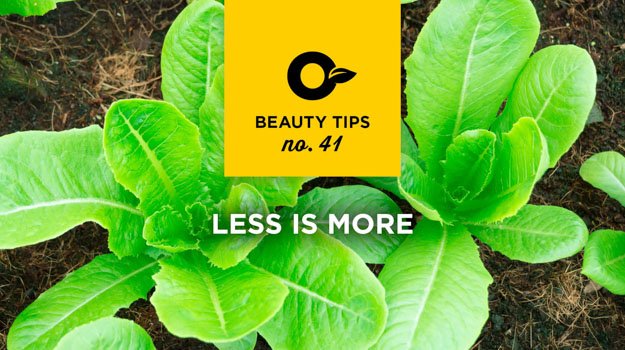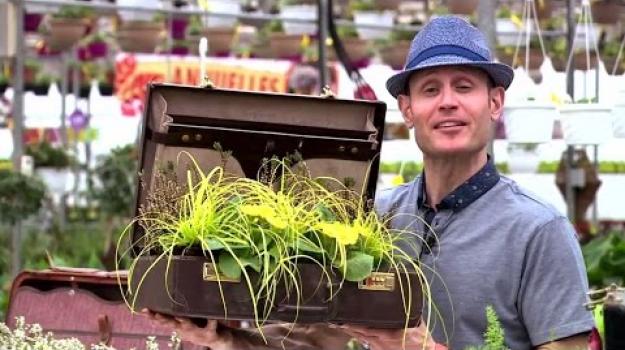
Who says shade means monotony. Too often, these areas of the garden are neglected on the pretext that the sun is scarce there. However, these spots offer opportunities to give birth to fabulous contrasts of light and shadow. By working with them, we can enjoy a cool and pleasant space when the heat waves are felt.
Like many perennials, some shrubs find ideal conditions growing in shady areas. And they’re far from being devoid of attractions: they can offer abundant flowering, variegated foliage, colourful stems, rapid growth or a delicious fragrance. Once planted, they will put on a magnificent show no matter the season.
There are a wide range of shrubs in various sizes, shapes and colours available to you. However, take the time to select correctly, since some tolerate almost total shade, while others need a few hours of sunshine each day. Also consider the hardiness zone, although a shady spot is often protected from the winds, which could allow you to cheat a little. Finally, make sure that your soil is suitable for them (acid or alkaline, wet or dry, etc.).
Their flowering could be a little less abundant, and their growth a little slower, but these shrubs will certainly bring a whole new dimension to the landscape.
Here are some suggestions that should inspire you.
AZALEA AND RHODODENDRON (AZALEA SYN. RHODODENDRON)

We often confuse the azalea and rhododendron shrubs, both lovers of acid soils. Both offer the spectacle of a dazzling bloom in early spring. The azalea is sometimes presented as a species of forest rhododendron. Both plants tolerate shade well. Their attractive blooms make them the stars of shady areas. For an optimal effect, they are used in groups, varying the colours. As a duo, azaleas and rhododendrons come in practically all colours, ranging from white to red, through mauve, pink, yellow and orange.
HYDRANGEA (HYDRANGEA)

Many hydrangeas prefer partial shade, but some flower just as well in full shade. They produce large flowers, round or conical in shape, which can reach a diameter of 20 cm or a length of 30 cm. Very long-lasting, the flowers are initially white (some are lime), and then turn pink, magenta or red later in the season. The foliage is usually green, but can also be purple, bronze or gold.
The climbing hydrangea can also be grown in the shade where it will transform an unattractive wall. Flowering will be optimal if the plant benefits from a little sun in the morning.
WINTERCREEPER (EUONYMUS FORTUNEI)

Wintercreeper is a small shrub with a compact habit, spreading and creeping, or even climbing when given the opportunity. Its evergreen foliage is most often variegated, green and white, or green and yellow. It lends itself to making beds, but can also be grown in containers, in a rockery or under large trees, whose roots aren’t a problem. Quite hardy, it likes both sun and shade, without losing its beautiful colouring.
It is also easy to propagate by layering or taking cuttings.
BURNING BUSH (EUONYMUS ALATUS)
This shrub, whose bright red fall colour is unparalleled, is also available in a dwarf version to meet the needs of smaller spaces. Tolerant to urban conditions, its colouring is only slightly less flamboyant in the shade.
DAPHNE (DAPHNE ODORATA)

Daphne lights up a shady spot with lovely, aromatic flowers and colourful, variegated leaves that become even more pronounced with a little sunlight. Daphne prefers cool, moist climates and doesn’t perform well in hot summers or extreme cold.
YEW (TAXUS spp.)

The yew is a hardy and versatile evergreen shrub that grows in deep shade or full sunlight. Look for showy red berries in late summer. Sizes and shapes differ considerably depending on the cultivar. Note: If you have children or pets, keep in mind that nearly all parts of yew plants are toxic.
JAPANESE KERRIA (KERRIA JAPONICA)

The Japanese kerria thrives in full or partial shade, and is adaptable to either wet or dry soil. Bright yellow flowers appear in spring, and stems turn to an attractive yellowish-green colour in winter. Be aware though, this fast-growing plant is invasive and causes real problems in some areas.
FALSE SPIREA (SORBERIA)

The false spirea with rowan leaves is a shrub with a dense and erect habit, with several stems starting from the ground. Its feathery foliage appears in early spring, with new reddish shoots gradually turning green. Its creamy white flowers, in the form of long, fluffy clusters in June and July, are appreciated by bees. Its growth is vigorous, so in humid soil, it is better to choose a compact variety.
SERVICEBERRY (AMELANCHIER SPP.)

Serviceberry is an excellent choice for cold climates. This hardy plant provides great beauty all year round. It is spectacular in the early spring, with its pretty, star-shaped, white flowers that appear even before the leaves come out. In the summer, the serviceberry produces small, edible, purplish-coloured berries that attract many different birds. In the fall, its foliage takes on bright shades, ranging from orange to scarlet red, while in the winter, its attractive branching habit and silver bark are attention getters.
VIBURNUM (VIBURNUM SPP.)

Viburnum is a hardy, low-maintenance shrub. Some cultivars barely exceed 60 cm, while others reach a height of 3 metres. It grows in partial shade as well as full sun and tolerates urban conditions well. Its white flowers appear in the spring in the form of flattened clusters, and small, red, yellow or blue fruits follow in summer. In the fall, its leaves turn yellow or burgundy, depending on the cultivar, to end the season in style.
The Blue Muffin strain is particularly impressive when covered in clusters of blue fruit.
DOGWOOD (CORNUS)

Like the viburnum, the dogwood is native to our forests, making it a great shrub for our gardens. The flowering of dogwoods can sometimes be inconspicuous, but its splendid foliage and colourful stems more than compensate its lack of showy flowers.
Gorgeous in any season, the silver variety features variegated green and white foliage. Its red stems make it one of the most admired plants once the garden is covered with snow. The Golden Shadow variety also has red stems, but its beautiful, variegated foliage is yellow and green. Varieties with green foliage are also interesting since they turn purple in the fall.
SUMMERSWEET (CLETHRA ALNIFOLIA)

Clethra tolerates full shade but prefers some light. Its pink or white flowers appear in floral stalks. The flowers come later in July and August, giving off a sweet scent that hummingbirds and butterflies can't resist.
Its fall colouring is yellow, which makes it possible to brighten the darker areas. The Hummingbird cultivar is more compact, while Sixteen Candles is a dwarf variety.
SUMAC (RHUS TYPHINA)

Sumac can be considered a shrub or a small tree, depending on the species. Either way, this interesting plant produces fruiting clusters that turn dry and dark brown as the season progresses, with intensely colourful foliage in autumn. Sumac is suitable for light shade.
The new cultivars have superbly cut foliage, yellow or green, nuanced with pink, bright red or orange depending on the time of year. Although these new cultivars are supposed to be less invasive than the native species, some owners still have a love-hate relationship with their sumac. Although the plant is superb with its exotic appeal and its incomparable autumn colouring, it still has the unfortunate tendency to sucker.
DIERVILLA HONEYSUCKLE (DIERVILLA)

Although diervillas, with their golden or orange foliage, would be dazzling in the deep shade, most of them prefer partial shade. Some varieties particularly appreciate shady situations, to the point that you must control their enthusiasm by pruning them during the season or by snipping off their suckers.
The diervilla lonicera (bush honeysuckle) likes to live under trees. Its foliage with new purple shoots turns green in summer, then orange-red in fall. Its yellow flowering makes for a beautiful contrast. The Kodiak Black cultivar offers purple-black foliage and pretty yellow flowers in early summer, while Kodiak Red's foliage is green edged with red. Its flowering, also yellow, continues all summer and its splendid autumn colour is red.




